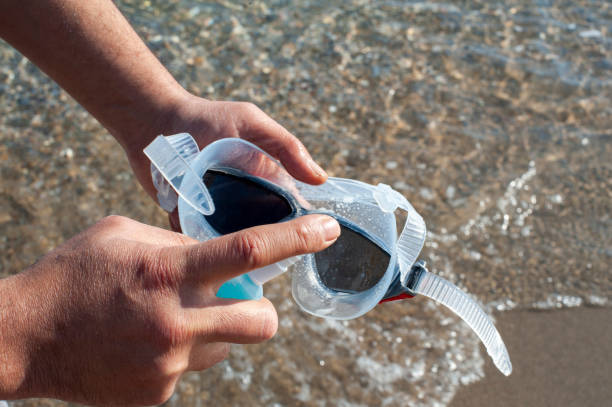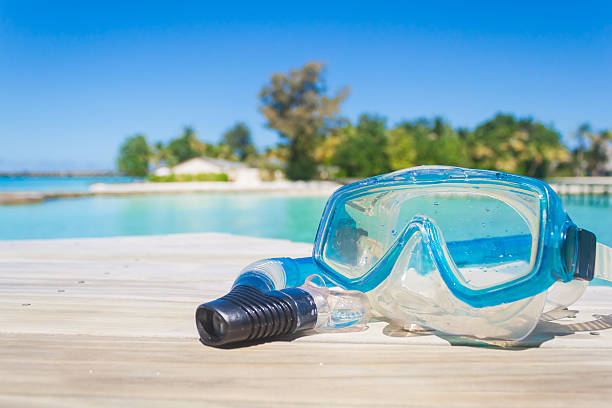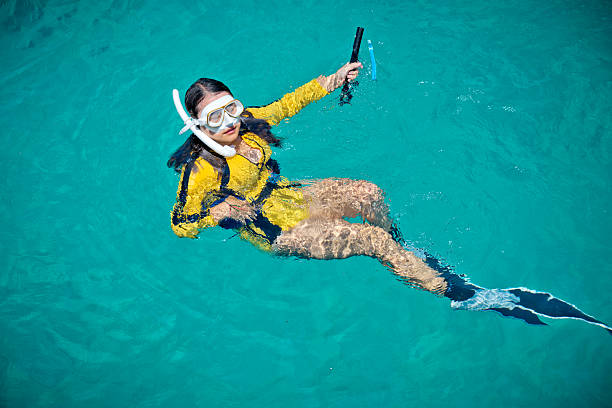Snorkeling is fun and lets you explore underwater. To ensure your gear stays clean and functions properly, it’s important to know how to clean snorkel gear. Regular cleaning removes bacteria and mold that can grow on your equipment. Skipping this essential step can lead to dirty gear and faster wear. Clean your snorkel gear the right way for safer and longer use.
Step-by-Step Guide: How to Clean Your Snorkel Gear
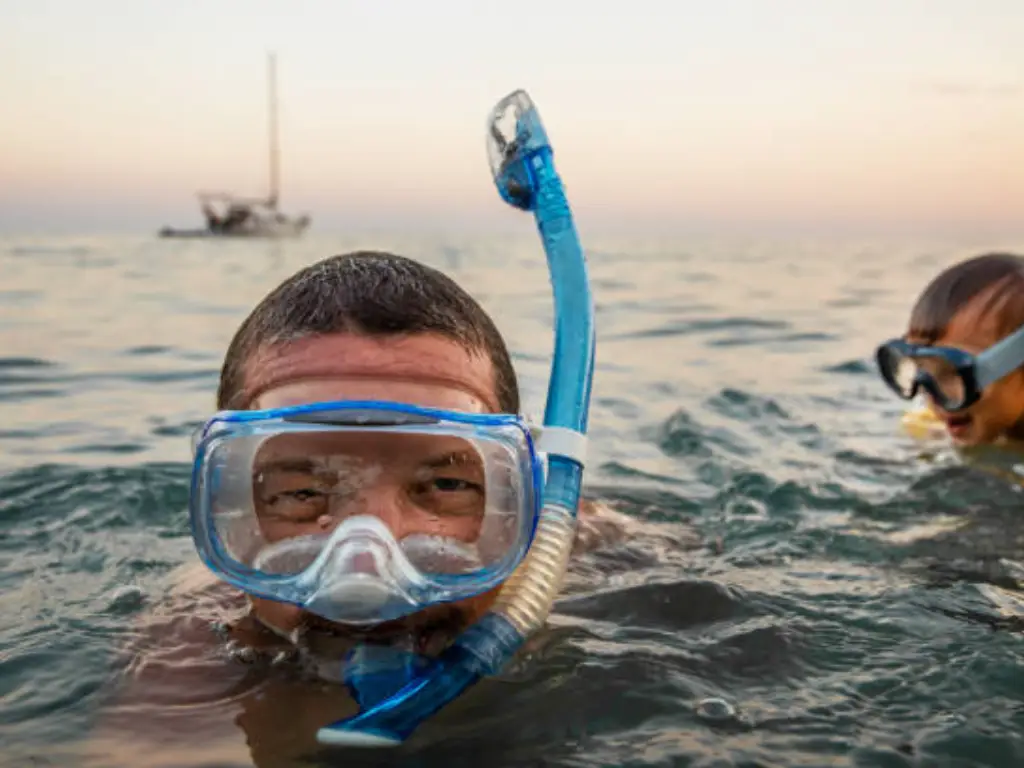
Preparing Your Snorkel Gear for Cleaning
Start by gathering all your snorkeling equipment. Check for dirt or damage. Remove sand, seaweed, or anything stuck to the gear. This helps make cleaning easier and avoids scratches. Rinse your snorkel mask, fins, and snorkel tube with fresh water to get rid of loose dirt.
Tip: Use lukewarm water for rinsing. Hot water can harm the silicone or plastic parts of your gear.
How to Clean the Snorkel Mask: A Detailed Process
Keeping your snorkel mask clean is important for clear underwater vision. Follow these steps to keep it in great shape:
Rinse the mask with fresh water to clear off dirt.
Put a small amount of non-gel toothpaste (about the size of a pea) on the dry lens. Avoid gritty or minty toothpaste to prevent scratches.
Gently rub the toothpaste on both sides of the lens using your fingers in small circles. Cover the whole surface.
Rinse the lens with fresh water to remove all toothpaste. Use a soft, wet cloth to clean tight spots.
Dry the lens completely with a clean towel. Repeat this process 5–7 times for the best results.
Note: This method works for glass lenses only. For plastic lenses, use a silicone-based cleaner instead of toothpaste.
Cleaning Your Fins: Tips and Best Practices
Fins can collect salt, sand, and other debris that cause damage. Follow these steps to clean them well:
Rinse the fins with fresh water to remove dirt and salt.
Soak them in warm, soapy water. Use mild soap like baby shampoo.
Use a soft toothbrush to clean straps and grooves where dirt hides.
Wipe the fins with a soft sponge to avoid scratches.
Let the fins dry completely before putting them away.
Pro Tip: Check the fin straps and screws often for damage. Replace broken parts to keep your fins secure while snorkeling.
How to Sanitize Your Snorkel Tube Effectively
The snorkel tube needs proper cleaning to stop bacteria from growing. Here’s how to clean it safely:
Rinse the snorkel tube with fresh water to remove dirt.
Fill a container with warm water and add a little dish soap. Soak the snorkel tube in the soapy water.
Use a soft brush or pipe cleaner to gently scrub inside the tube.
Rinse the tube well with fresh water to remove soap.
For extra cleaning, flush the tube with vinegar or a special cleaning solution. Don’t use ammonia, as it can leave harmful residue.
Let the snorkel tube air dry fully before storing it.
Important: Never use bleach or chlorine cleaners on your snorkel tube. These can weaken the plastic and shorten its life.
Rinsing and Drying: The Final Steps for Gear Care
After cleaning each piece of your snorkeling gear, rinse everything again with fresh water. This removes leftover soap or cleaner. Focus on areas where water might stay, like mask edges or inside the snorkel tube.
Once rinsed, place your gear in a shaded, airy spot to dry. Avoid direct sunlight, as it can damage the materials. Make sure everything is fully dry before storing to stop mold and bacteria from growing.
Reminder: Keep your snorkel mask in a protective case to avoid scratches and keep it clear.
Advanced Tips to Clean Snorkeling Gear

Using Vinegar for Deep Cleaning
Vinegar works well for cleaning snorkel gear deeply. It removes smells, kills germs, and clears mineral buildup. Mix warm water and white vinegar in equal amounts in a container. Put your snorkel mask, fins, and snorkel tube in the mix for 30 minutes. Use a soft brush to gently scrub tough spots. After soaking, rinse everything with fresh water to remove vinegar traces.
Tip: Vinegar is safe for most gear but avoid soaking silicone parts too long.
Disinfecting with Bleach or Alcohol
Disinfecting keeps your snorkel gear clean and safe. Bleach and alcohol work well if used carefully. For bleach, mix 1/3 cup of bleach with a gallon of water. Soak hard surfaces like the snorkel tube for 1–10 minutes based on how much cleaning is needed. Rinse well with fresh water to stop damage or irritation.
Alcohol solutions with 60% or more ethanol or isopropanol can also disinfect. Be careful, as alcohol can harm plastics and rubbers if used often. Use it lightly and keep it away from compressed gases since it can catch fire.
Important Guidelines:
Never mix bleach with other cleaners.
Always rinse and dry gear after disinfecting to avoid damage.
Use alcohol only on smooth surfaces and in airy spaces.
Removing Stubborn Stains and Odors
Stains and smells can stick to snorkel gear after long use. To fix this, make a paste with baking soda and water. Rub the paste on stains using a soft brush. For smells, soak gear in water with a few drops of essential oil like tea tree or lavender. These oils fight bacteria naturally.
If stains don’t go away, try a cleaner made for snorkeling gear. These cleaners remove marks without harming the materials. Follow the product instructions for the best results.
Pro Tip: Clean your gear often to stop stains and smells from sticking. Rinse it right after use to avoid buildup.
Mistakes to Avoid When You Clean Snorkel Gear
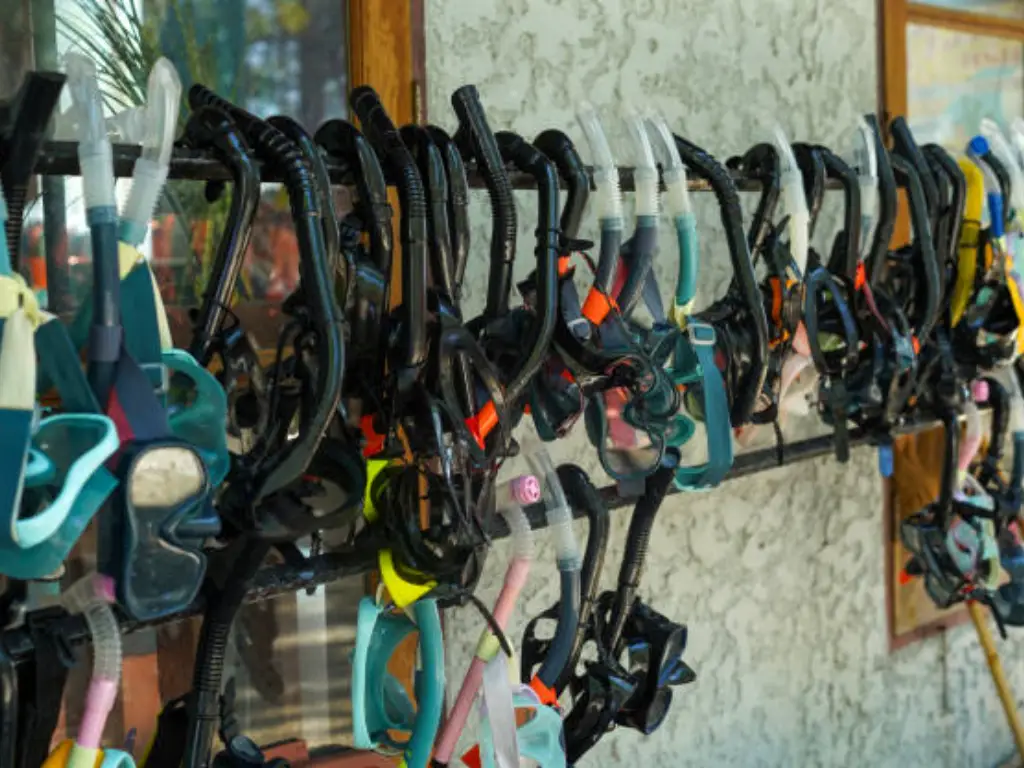
Forgetting to Rinse After Use
Not rinsing your snorkel gear after use can cause issues. Saltwater, sand, and dirt stick to your gear and damage it. These can also help bacteria and mold grow. After snorkeling, rinse your gear well with fresh water. Focus on spots like the snorkel tube and mask edges where dirt collects.
Tip: Rinse your snorkel gear right after use, even if cleaning comes later. This stops buildup and keeps your gear in good shape.
Storing Wet Gear
Putting away wet snorkel gear is a big mistake. It can cause mold, bad smells, and weaken the materials. Make sure all parts are fully dry before storing. Dry your gear in a shady, airy spot to avoid sunlight damage.
Reminder: Don’t pack wet snorkel gear in a closed bag. Damp gear creates the perfect place for bacteria to grow.
Leaving Gear in Sunlight Too Long
Leaving snorkel gear in sunlight for too long can harm it. UV rays make silicone and plastic weak and easy to crack. Over time, this shortens your gear’s life. Always dry your gear in the shade and store it in a cool, dark spot.
Pro Tip: Keep your snorkel mask and fins in a case. This protects them from sunlight and scratches.
Avoiding these mistakes helps your snorkel gear last longer and stay ready for your next adventure.
Proactive Tips to Maintain Snorkeling Equipment
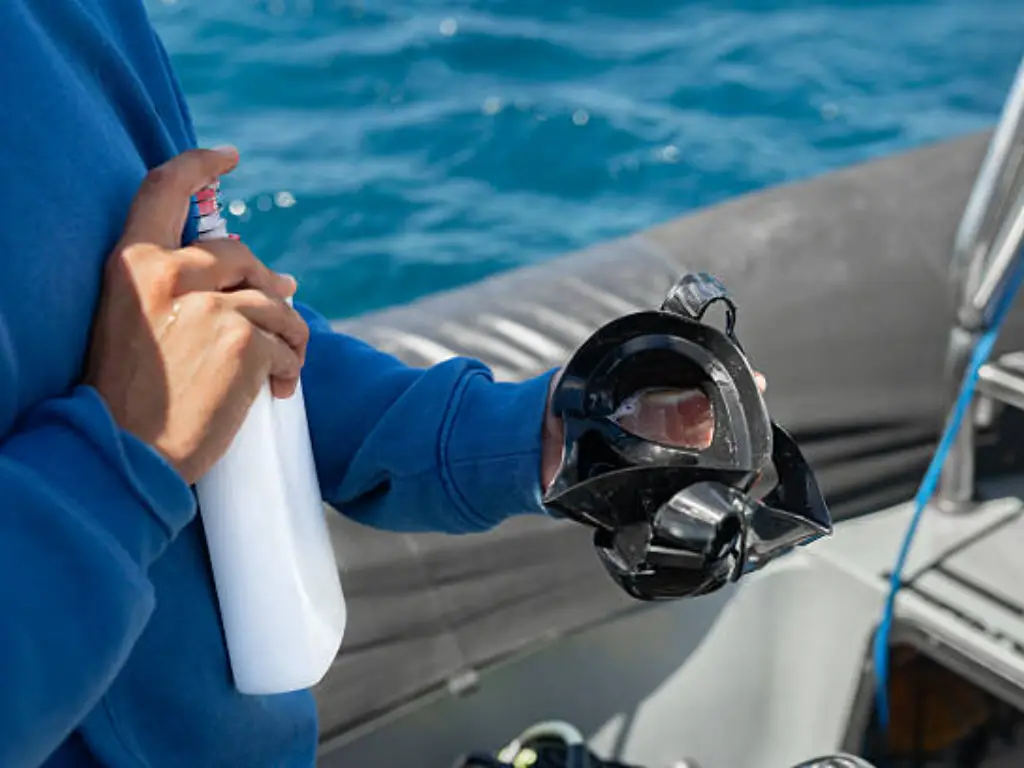
Using Anti-Fog Solutions
A foggy snorkel mask can ruin your underwater fun. Anti-fog solutions help keep your vision clear while snorkeling. Special sprays or coatings work well to stop fogging. Some advanced products, like plastic films, last longer than sprays.
To get the best results, apply anti-fog solution before snorkeling. Rub it gently on the lens, then rinse with water. This helps stop condensation and keeps the lens clear. Anti-fog masks, like the Tidal Mask, are tested and proven to work well in real conditions.
Tip: Don’t touch the inside of the mask after applying the solution. This keeps it working longer.
Storing Your Gear the Right Way
Storing your snorkeling gear properly makes it last longer. Always keep your gear in a cool, dry place, away from sunlight. Store masks and snorkels in separate boxes to protect the silicone parts. Use special hangers for regulators to avoid bending hoses.
If you have diving torches, take out the batteries before storing them. This stops leaks. Make sure drysuits are fully dry before putting them away. Hang them upside-down or lay them flat. Store cylinders upright with caps to keep dust out.
Reminder: Never store wet gear. Wet gear can grow mold and rust.
Checking Gear for Damage
Checking your gear often helps find problems early. Look for cracks, frayed straps, or other damage. For deeper checks, use tools like sound wave tests or imaging methods. These tools find hidden flaws in materials.
Inspection Method | What It Does |
|---|---|
Visual Inspections | Look for cracks, tears, or other visible damage. |
Acoustic Resonance Technology (ART) | Uses sound waves to find small flaws in materials. |
Phased Array Ultrasonic Testing (PAUT) | Creates detailed images to check hard-to-see areas like welds. |
Pro Tip: Check your snorkel gear after every use. This helps catch damage early and keeps your gear safe for your next trip.
Cleaning your snorkeling gear often keeps it safe and durable.
Wash masks, snorkels, and fins with clean water after use.
Keep gear in a cool, dry spot to avoid sun or heat damage.
Check straps, buckles, and valves for any signs of damage.
Tip: Clean your gear regularly to save money and snorkel stress-free!
FAQ
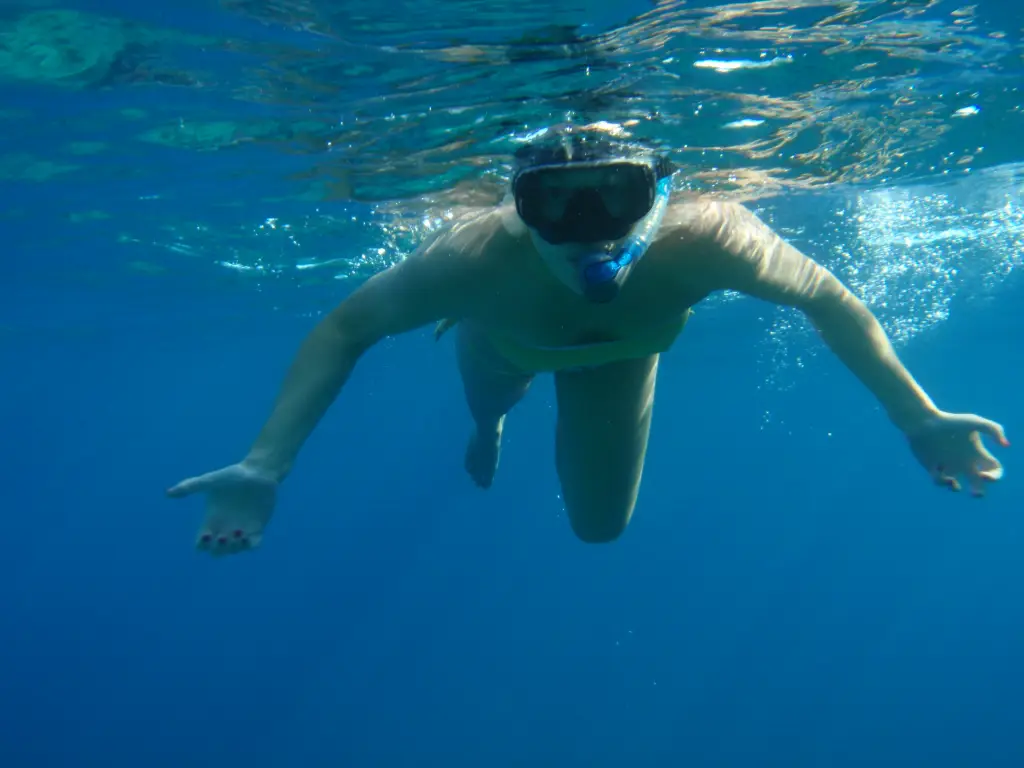
How often should you clean your snorkel gear?
Clean your snorkel gear every time you use it. This stops salt, sand, and germs from building up. It also keeps your gear clean and lasting longer.
Can you use dish soap to clean snorkel gear?
Yes, you can use mild dish soap to clean it. Stay away from strong soaps that might harm silicone or plastic parts.
Tip: Baby shampoo is a safe choice for delicate materials.
What’s the best way to store snorkel gear?
Keep your gear in a cool and dry spot. Use cases to protect masks and snorkels from scratches or damage. Avoid sunlight and wet places.
Reminder: Make sure your gear is fully dry before storing it to stop mold.
